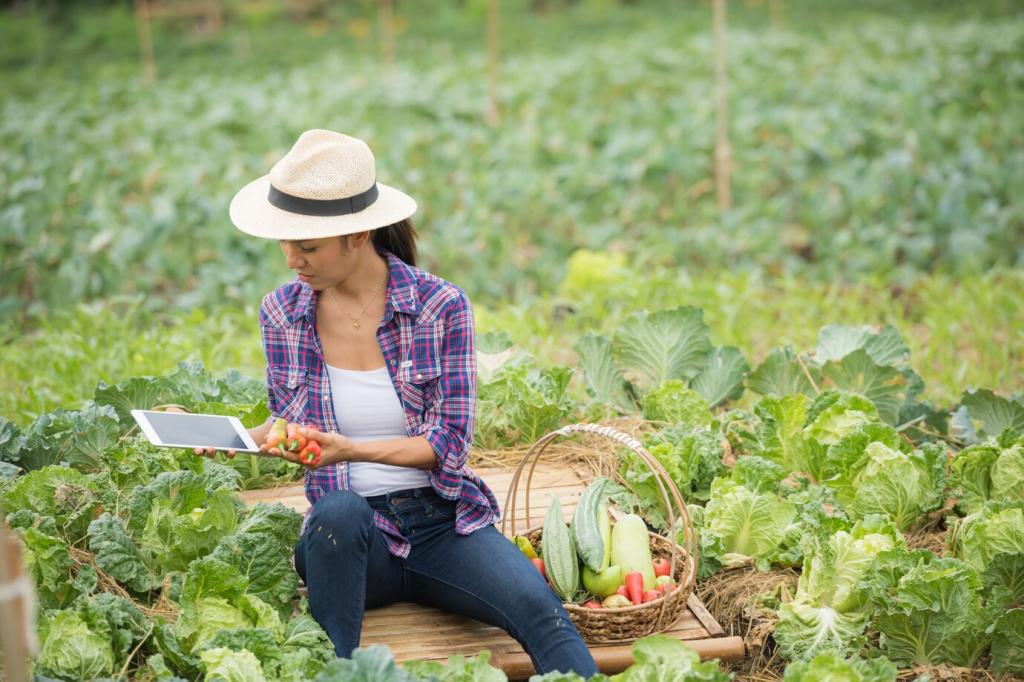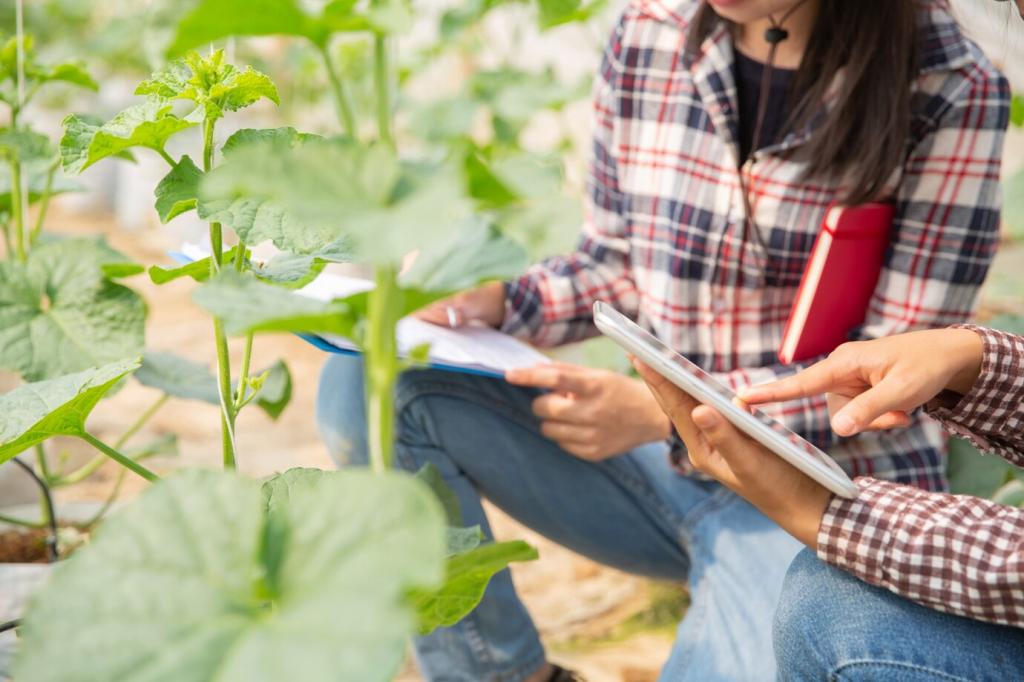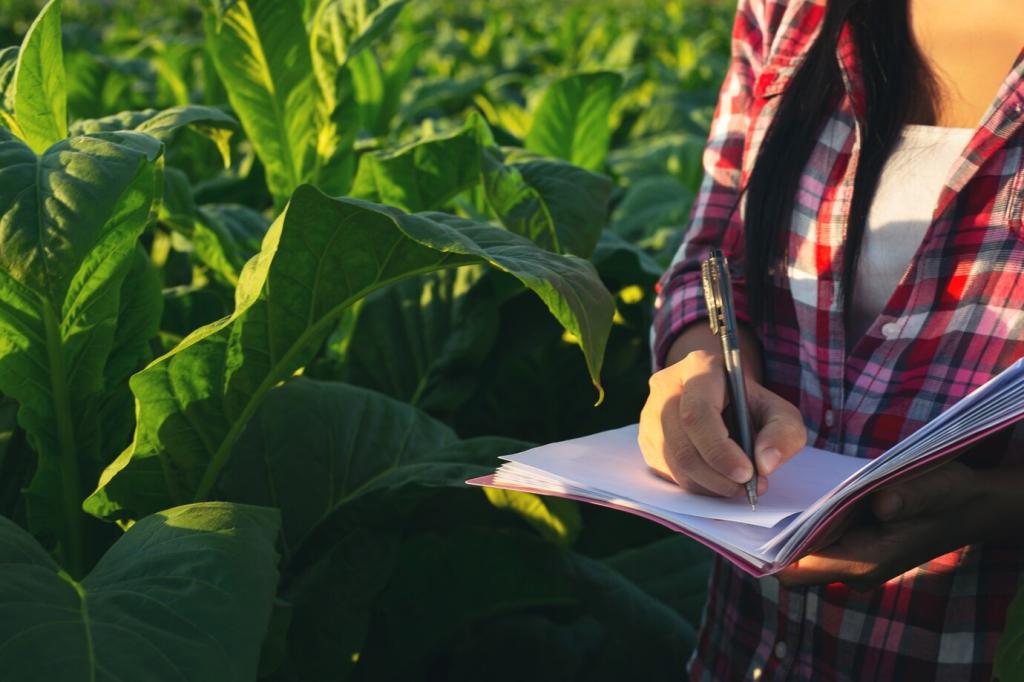Future Innovations in Urban Farming
Urban farming stands at the forefront of sustainable city living, transforming how urban populations source fresh produce. As cities continue to grow and demands on food supply intensify, the evolution of urban agriculture is fueled by novel technologies and forward-thinking approaches. This page delves into the next wave of advancements poised to revolutionize urban farming, highlighting the creativity, sustainability, and community potential embedded in future innovations.
Smart Vertical Farming
Automated Growth Modules
Automated growth modules are becoming a cornerstone of future vertical farms. These modules use advanced robotics and sensor technologies to ensure that each plant receives optimal care throughout its life cycle. By automating seeding, watering, harvesting, and even pest detection, such systems free up labor while maintaining exceptional consistency in crop output. These technologies also allow for real-time monitoring, enabling urban farmers to adjust variables like light, humidity, and nutrients, all from a remote interface. The result is a seamless integration of human oversight and machine precision, promising year-round, high-quality yields within limited urban spaces.
Data-Driven Cultivation
Harnessing vast amounts of data, next-generation vertical farms are adopting machine learning algorithms to predict growth patterns, identify potential issues before they arise, and continuously refine their cultivation strategies. These insights optimize not only crop health but also resource allocation, reducing waste and improving profitability. Farmers can tailor environmental parameters for specific crop varieties, ensuring that plants thrive regardless of external urban conditions. Ultimately, data-driven cultivation is evolving into a crucial tool for urban food security, minimizing crop failure risk and supporting sustainable urban diets.
Resource Efficiency
Future vertical farming puts an unprecedented emphasis on resource efficiency. Closed-loop water recirculation, integrated nutrient recycling, and energy-efficient LED lighting come together to minimize inputs and waste. These innovations reduce a farm’s ecological impact and significantly cut operational costs—a critical factor for widespread adoption in cities. By achieving more output per square meter and employing renewable energy sources, resource-efficient practices make urban agriculture an environmentally responsible and economically viable solution for feeding future urban populations.
Aquaponics and Hydroponics Evolution
Integrated System Scalability
The scalability of aquaponics and hydroponics is being pushed to new heights through modular designs and decentralized networks. Many innovators are developing compact, stackable systems tailored for rooftops, vacant buildings, and unused urban infrastructure. These scalable solutions allow for rapid deployment across various urban environments, enabling communities and entrepreneurs to establish food-producing nodes almost anywhere. With reduced need for arable land and the ability to maintain precise control over inputs, integrated system scalability represents a pivotal trend toward widespread adoption and food accessibility.
Expanding Crop Diversity
One of the most exciting prospects for future aquaponics and hydroponics is the ability to grow an increasingly diverse array of crops beyond leafy greens. Enhanced nutrient solutions, controlled environments, and selective breeding techniques make it feasible to successfully cultivate fruiting plants, root vegetables, and even specialty herbs in urban setups. This growing diversity supports healthier diets, meets diverse culinary preferences, and opens doors for urban farmers to target premium markets and niche products, all while reducing the distance food travels from farm to plate.
Resilience and Sustainability
Advancements in aquaponics and hydroponics are sharpening their resilience and sustainability. Closed-loop systems are being refined to not only recycle water and nutrients but also to better withstand climate volatility and external shocks. Innovations such as disease-resistant fish species in aquaponics or biodegradable growth mediums in hydroponics are making these systems more robust and eco-friendly. Their resilience ensures year-round production despite changing urban environments, bolstering food security while minimizing environmental impact.
Urban Farming with Biotechnology
The application of CRISPR and other gene-editing technologies is allowing urban farmers to cultivate crops tailored for city life. Modifying plants for traits such as reduced root size, faster growth, increased nutrient content, or resilience to pests enables productivity in vertical and compact spaces. These advancements significantly diminish the need for chemical treatments and enable simultaneous cultivation of diverse species without cross-contamination. With ongoing research, the next generation of city crops will be ever more personalized, sustainable, and nutritious.
Microbial and fungal biotechnology is increasingly vital for urban farming’s future, enhancing plant growth and soil health within limited environments. Beneficial bacteria and mycorrhizal fungi are being introduced into hydroponic and aquaponic systems, boosting nutrient uptake and disease resistance. Additionally, engineered microbiomes promise to make plants more adaptable to non-traditional substrates or recycled water sources. These technologies underline a symbiotic approach, reducing reliance on synthetic inputs while harnessing natural processes for robust, high-yield successes in urban agriculture.
Urban farming is moving beyond plants to include biotechnological proteins and alternative foods. Using fermentation bioreactors, startups are now cultivating everything from meat substitutes to high-value dairy proteins within city limits. This trend leverages precision fermentation and cell culture, sidestepping the environmental burdens of conventional livestock while still offering protein-rich, sustainable food sources. Combining efficiency with sustainability, biotechnologically produced proteins represent a vital pillar for meeting city-based dietary needs in the future.

Previous
Next
Automation and Robotics in Urban Farms
Autonomous tending systems, including robot arms and mobile platforms, are revolutionizing everyday farm tasks such as planting, monitoring, pruning, and harvesting. Equipped with a wide array of sensors and guided by artificial intelligence, these robots can respond in real time to crop changes, making minute adjustments to optimize plant health. By reducing dependence on manual labor, autonomous tending systems empower urban farmers to manage larger and more complex operations while ensuring consistency and quality in yield.

Rooftop and Wall Farming
City rooftops and exterior walls are being reimagined as prime locations for agriculture. By installing lightweight, modular planting systems, urban pioneers are converting underused surfaces into productive farms that supply fresh produce directly to local communities. Rooftop and wall farming not only increases food availability but also helps mitigate heat islands, improve air quality, and enhance the aesthetics of cityscapes. Continued innovation promises to standardize these practices, integrating agriculture seamlessly into modern urban design.

Brownfield and Infrastructure Conversion
Abandoned factories, warehouses, and other brownfield sites are being repurposed into controlled-environment farms. By reclaiming previously unusable land, urban agriculture is contributing to environmental restoration and community revitalization. Advanced indoor farming technologies allow such spaces to support highly controlled conditions for a wide variety of crops, all while addressing food deserts and reducing dependency on external supply chains. This trend is positioned to redefine how cities approach both food and post-industrial development.

Apartment and Residential Integration
Urban farming is becoming increasingly accessible to individual households through balcony gardens, window farms, and smart indoor gardening appliances. Innovations in compact and automated systems are empowering residents to grow their own herbs, vegetables, and even fruits at home, regardless of space limitations. Residential integration not only fosters self-sufficiency and nutrition but also reconnects city dwellers with the process of food production, creating more engaged and resilient urban communities.
Sustainable Energy and Circularity
Renewable Energy Integration
Innovations in solar, wind, and other renewable energy sources are making it possible for urban farms to achieve near-zero emissions operations. Solar panels installed on rooftops or as shading structures in greenhouses generate power for climate control and lighting. Advanced battery technologies are enabling uninterrupted operations, while on-site generation reduces reliance on fossil fuels. This integration ensures that vertical and indoor farms not only feed cities sustainably but also operate as models of clean energy adoption.
Closed-Loop Waste Management
Next-generation urban farms are adopting closed-loop waste management systems that recycle organic byproducts back into the farming process. Food scraps, plant residues, and even wastewater are processed into compost, biofertilizer, or biogas through on-site treatment systems. By turning waste into valuable inputs, urban farms are dramatically cutting their environmental footprint and contributing to a circular economy. This approach not only reduces landfill demand but also yields more resilient and self-sustaining urban food systems.
Urban Microclimate Optimization
Sustainable urban farming extends to influencing local microclimates through strategic placement and operation. Green roofs and wall farms help modulate building temperatures, reduce energy consumption for heating and cooling, and enhance urban biodiversity. By carefully considering the interaction between farms and their surroundings, these innovations create healthier environments for both plants and residents. Urban microclimate optimization reflects a forward-thinking synthesis of agriculture, architecture, and ecology at the core of future-ready cities.
Digital Marketplaces and Food Traceability
The rise of digital marketplaces is transforming how urban farmers reach their customers. Through platforms and apps, growers can bypass traditional retail channels and sell produce directly to individuals, restaurants, and local businesses. These digital solutions allow for real-time updates on crop availability, flexible delivery scheduling, and personalized recommendations. Direct-to-consumer models shorten supply chains, reducing food miles, ensuring freshness, and building lasting relationships between urban producers and their communities.

